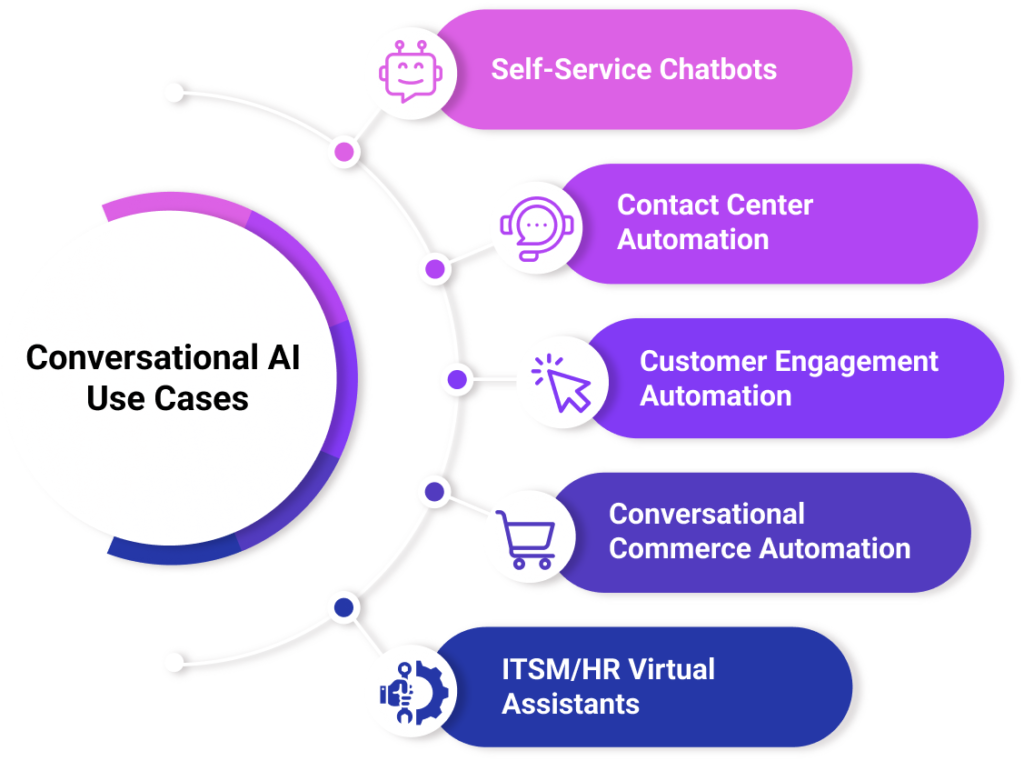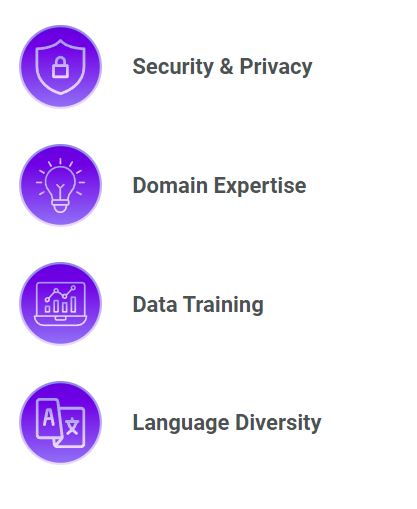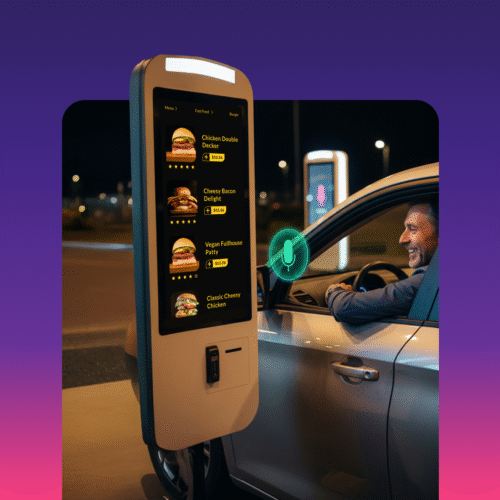For years, having a productive conversation with a computer was solidly in the realm of science fiction. On Star Trek, Captain Kirk could ask a question and get a pleasant, accurate reply. On the stranger side, there were computers with their own agendas ranging from HAL in 2001: A Space Odyssey to Samantha in Her.
Conversational AI: What is It?
For years, having a productive conversation with a computer was solidly in the realm of science fiction. On Star Trek, Captain Kirk could ask a question and get a pleasant, accurate reply. On the stranger side, there were computers with their own agendas ranging from HAL in 2001: A Space Odyssey to Samantha in Her.
We’re far away from the dream or nightmare of an AI that loves or hates us. But the helpful AI that answers our questions is here. It’s known as Conversational AI (CAI) and is increasingly being used to make chatbots, virtual assistants, and customer service systems able to answer detailed questions. Conversational AI is getting more sophisticated every day.
But how does Conversational AI work? What can it do? And, perhaps most important, what can it do for the customer service industry?
How Conversational AI Works
Conversational AI is built on components that allow it to converse in a surprisingly human way. AI understands us using Natural Language Processing (NLP), a sophisticated system to parse human language.
People can say things in many different ways. For example, if you want to know the weather, you might say, “what’s the weather” or “is it going to rain today?” or “is it a good day for a picnic?” NLP lets the AI recognize that these are all questions about the weather.
- Dialogue Management is the AI component that decides how to respond to a question or statement. In our simple example above, it knows it should offer a weather forecast.
- The Knowledge Base is the information the AI has to work with. The knowledge base needs to contain information the AI needs to fulfill its tasks. For example, only some AI needs to tell people the weather, so not every knowledge base contains information on getting a weather forecast.
- Context Awareness is keeping track of the conversation. For example, if you ask if it’s a nice day for a picnic and the answer is no, context awareness is the ability to understand that you are still talking about the weather when you say, “well, how about tomorrow?”
- Machine Learning is the ability to continually improve performance based on interactions and feedback. For example, if you ask about the weather and the Conversational AI replies, “weather is spelled w-e-a-t-h-e-r,” you can respond that this isn’t what you wanted to know, and the AI will learn to change future replies based on your response. In that way, a Conversational AI can constantly refine itself.
- The last component, Integration with Back-end Systems, is, in human terms, the ability to look something up. So, for example, you might check Wikipedia when asked a question you can’t answer. An AI does something similar, seeking information in whatever databases, CRMs, and APIs it’s connected with. But it can sort through vast amounts of data.

Conversational AI Use Cases
Conversational AI has proven incredibly useful for businesses. In e-commerce, it can offer personalized, conversational product recommendations; in education, it can create personalized learning interactions. Most famously, Microsoft is beginning to use it in their Bing search engine, with Google planning to do the same very soon.
A particular strength of Conversational AI is in customer service, where, unfortunately, many customer service call centers are stuck under a voice fulfillment “glass ceiling.” Traditional automated help systems can frustrate customers, with limited options and rigid menus that force them to repeat themselves multiple times. This leads to high customer dissatisfaction and low fulfillment success rates, harming a business’s reputation and revenue.

Conversational AI, however, offers a more fluid and responsive dialogue that increases customer satisfaction and reduces costs. In addition, by using natural language processing (NLP) and other AI technologies, conversational AI can understand and interpret complex customer requests in a way that traditional IVR systems cannot.
Omilia, for example, offers end-to-end conversational AI solutions that allow businesses to easily implement and customize an immersive, conversational customer service experience without semantic or programming know-how. Our conversational AI technology is designed to provide enhanced fulfillment success rates, reducing customer service costs and cutting wait times while lessening the need for a human agent to take over. And it allows businesses to be as responsive to customers at 3 AM as they are during working hours.
A company moving from an older IVR system to a conversational AI model will find across-the-board improvements in ROI, customer satisfaction, call capacity, and accuracy. With Omilia’s conversational AI technology, businesses can break through the glass ceiling of traditional automated help systems and achieve enhanced fulfillment success rates that delight customers and improve business outcomes.
As Conversational AI evolves, it will be used in new and interesting ways.
The Challenges of Conversational AI
Of course, any technology as truly revolutionary as Conversational AI has its challenges. Even once you’ve solved the intricacies of decoding complex requests, keeping track of what’s been said in an interaction and responding in a human-sounding way, there are other practical difficulties.
Data privacy and security is, of course, a crucial concern anytime you give software access to your data. As a result, security threats and privacy breaches are constant concerns that must be addressed.
Also, Conversational AI needs to be able to integrate into existing systems. And once in place, it must scale to any size required.
Consistency and accuracy are also major challenges. Much of ChatGPT and Bing search AI news, has been about when they deliver inconsistent or inaccurate responses. While Conversational AI needs to sound human, it must also exhibit machine-like precision

How Omilia puts Conversational AI to work
Omilia offers the power and cost savings of end-to-end Conversational AI with a simple, no-code interface that allows businesses to easily implement and customize an immersive, conversational customer-service experience without semantic or programming know-how. It also must provide this experience with maximum security and consistency.
The Omilia Cloud Platform (OCP) is an enterprise-scale Conversational AI platform for customer service automation across voice and text channels that integrates with most leading CCaaS platforms.
With Omilia, you can:
- Build next-gen IVR virtual assistants that engage in true end-to-end conversations in natural language. Rather than forcing customers to choose from a limited menu or asking them to make concise statements, they can speak freely with no predetermined flow or structure. Instead, they talk, and Omilia’s Conversational AI understands and responds.
- Authenticate customers via their unique biometric voice print in the background as they speak freely with the Virtual Agent. Omilia Authentication and Anti-Fraud results in a better authentication system that reduces handling times to create a more seamless and satisfying customer experience.
- Give customers the convenience of conversationally asking questions and making requests, even complicated, multi-part ones, without needing intervention from a costlier human agent.
- Use the data generated by your app to analyze customer conversations with the virtual agent. Omilia’s Conversational Insights dashboards provide detailed call center analytics to help you fine-tune your Omilia applications and learn your customers’ top needs and concerns.
- Deploy a new bot out of the box in just minutes.
Omilia’s high-performing Conversational AI correctly understands 96% of what it’s asked. As a result, customers who have adopted OCP have seen an average 43% increase in call capacity, a 40% increase in self-service usage, a 95% decrease in internal transfers, and a 50% drop in handling time. This has all resulted in reducing agent operations costs by 21%.
Conversational AI has gone from a science fiction fantasy to an everyday reality. And every day, Omilia is working to make that reality even better.


